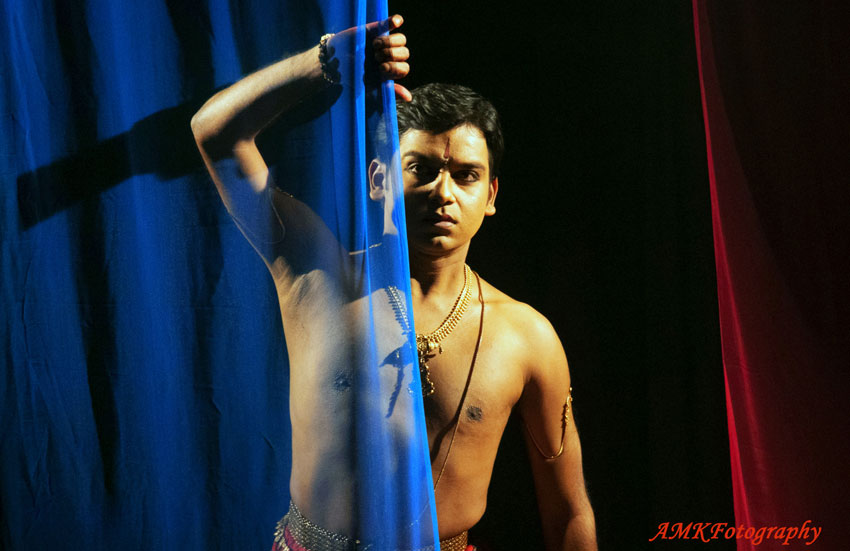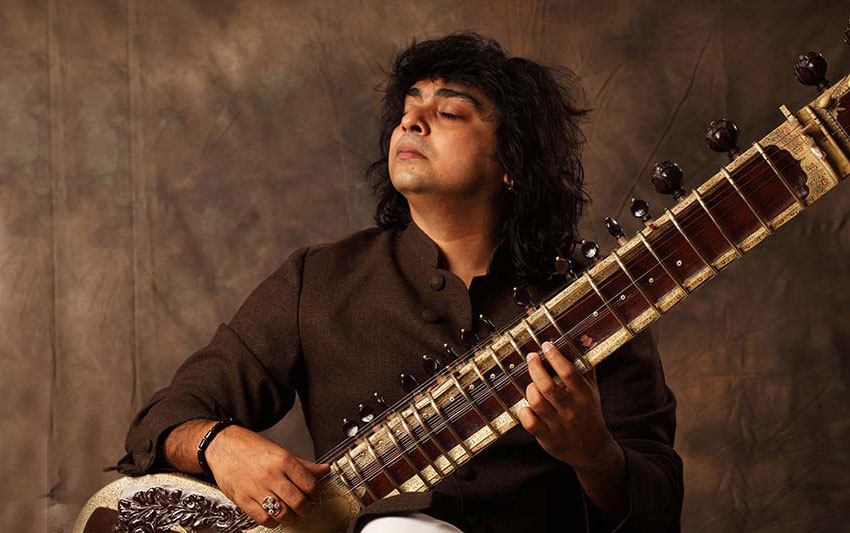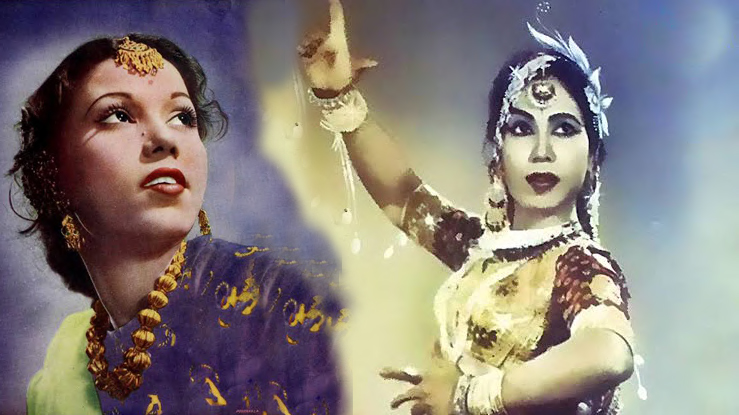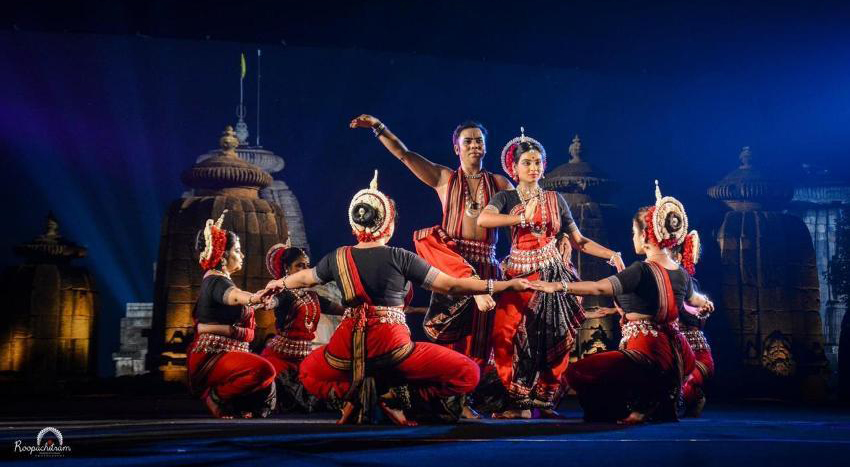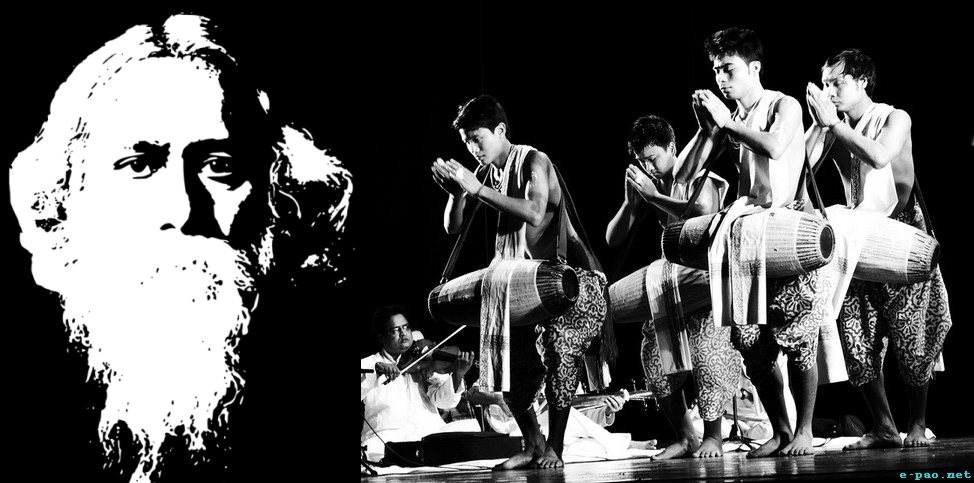As Bheeshma lay on the bed of arrows, Shikhandi swayed towards him and taunted the mighty warrior, who had finally fallen. For Amba it was revenge, for Shikhandi it was freedom from a lifetime of internal struggle. The climactic moment of the solo Bharatnatyam presentation, Shikhandi-the inner quest, when Himanshu, as Amba-Shikhandi, walks towards Bheeshma lying on the bed of arrows and taunts him on his incapacitated condition was a moment that laid bare the rawest of emotions that revenge draws upon. But as he walked away, depicting the emptiness post revenge it made one forget about the Shikhandi of the Mahabharat and think of people in today’s world who undergo the daily struggle of accepting the various challenges that life throws at them.
Himanshu Srivastava from New Delhi is a Disciple of Guru Saroja Vaidyanathan and Guru Rama Vaidyanathan. Shikhandi -The Inner Quest was presented at Gauranga Auditorium, Iskon, Juhu, Mumbai on Mar 24th 2019.
The piece began with a visual of Himanshu oscillating through dance between two diaphanous curtains-one pink and one blue. The two colours, symbolic of the masculine and feminine in popular culture, along with mocking laughter (atihasita) resonating within the music, set the mood for the intense but conflicting piece of nritya. We see Krisha playing the role of a counsellor, but also becoming the medium for Shikhandi to recollect (Smarana) his past life. The strains of the shenai followed by ‘sakhi sab gaave mangala, ratiya manohar, kasi kumarin ke hoove swayamwar’ (the auspicious night of the swayamwara of the princesses of Kashi has arrived amidst song and beauty). While the rest of the piece was in Sanskrit, this piece in khariboli aptly suited the beginning of the flashback within the narrative. Unallowed to be with her paramour of choice, and rejected by Bheeshma, Amba seeks Lord Shiva through penance and receives a boon that she would be reborn in time to get her revenge against Bheeshma.
As the story moves on, Himanshu displays great sensitivity in his portrayal of Shikhandi. Born to Dhrupad, who brings him up like a son, Himanshu depicted the conflict between the masculine and feminine through every element-postures, gait, and bhava. As Shikhandi becomes aware of his womanhood, he is married only to ham his wife discover his lack of manhood. Shikhandi sets out to take his life but is stopped in time by a Yaksha who agrees to give Shikhandi his manhood. Himanshu portrayed this scene with both mystery and beauty. As Shikhandi finally becomes a man in the true sense, the absolute joy and the confident masculinity in every movement is a true testament to the engaging choreography. It is this confident Shikhandi who is finally awakened (Jagruta) to the truth of all his lives and arrives at the Kurukshetra, confident of his role in Bheeshma’s destruction.
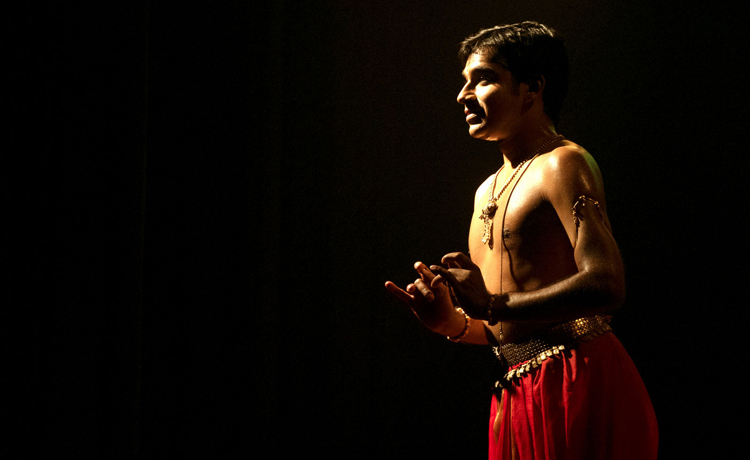
Himanshu transcends the boundaries of his body as he brings Shikhandi to life and in the end weaves together the pink and the blue to create in his own last words the ‘Man in the woman and the woman in the man’. A well researched and executed music piece, the lyrics in Awadhi were written by his father D K Srivastava. The Sanskrit lyrics and music composition were by Dr S Vasudevan, vocal by K Venkateshwaran, Mridangam by Tanjavur R Kesavan, Flute by Rajat Prasanna and rhythmic inputs by Kalishvaran Pillai and Sri Ganesh.



